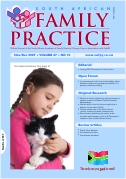Pet-related infections
Abstract
Human contact with cats, dogs, and other pets results in several million infections each year in the United States, ranging from self-limited skin conditions to life-threatening systemic illnesses. Toxoplasmosis is one of the most common pet-related parasitic infections. Although toxoplasmosis is usually asymptomatic or mild, it may cause serious congenital infection if a woman is exposed during pregnancy, particularly in the first trimester. Common pet-borne fungal infections include tinea corporis/capitis (ringworm); campylobacteriosis and salmonellosis are among the most common bacterial infections associated with pet ownership. Less commonly, pets can transmit arthropod-borne and viral illnesses (e.g., scabies, rabies). Infection in a pet can provide sentinel warning of local vectors and endemic conditions, such as Lyme disease risk. Treatment is infection-specific, although many infections are self-limited. Prevention involves common sense measures such as adequate hand washing, proper disposal of animal waste, and ensuring that infected animals are diagnosed and treated. Special precautions are indicated for immunocompromised persons. Increased communication between primary care physicians and veterinarians could improve treatment and prevention of these conditions. Permission from the AAFP was granted to publish this article in the hardcopy only. Kindly refer to www.aafp.org or subscribe to the hardcopy of South African Family Practice.
Section
CPD
By submitting manuscripts to SAFP, authors of original articles are assigning copyright to the South African Academy of Family Physicians. Copyright of review articles are assigned to the Publisher, Medpharm Publications (Pty) Ltd, unless otherwise specified. Authors may use their own work after publication without written permission, provided they acknowledge the original source. Individuals and academic institutions may freely copy and distribute articles published in SAFP for educational and research purposes without obtaining permission.

